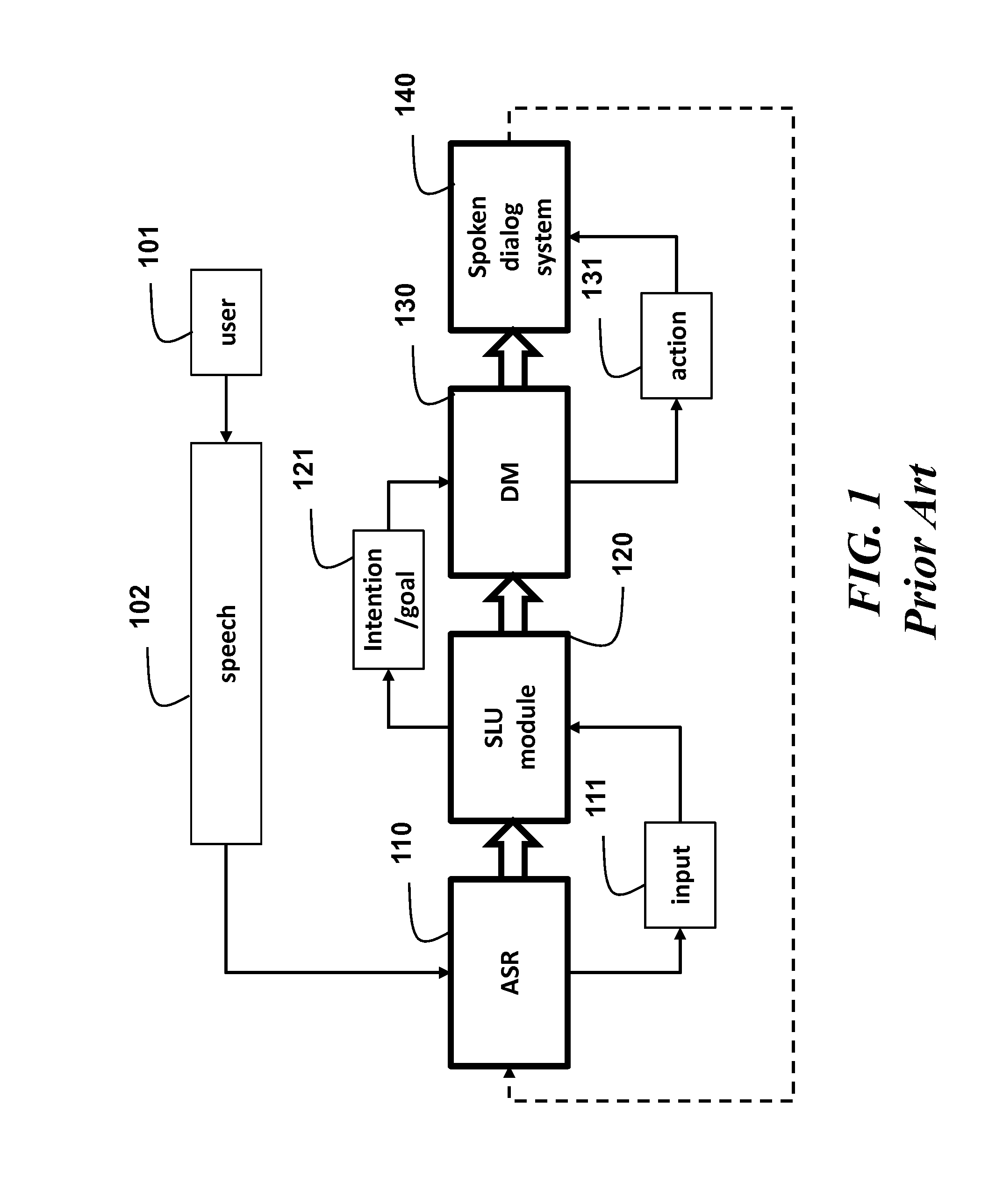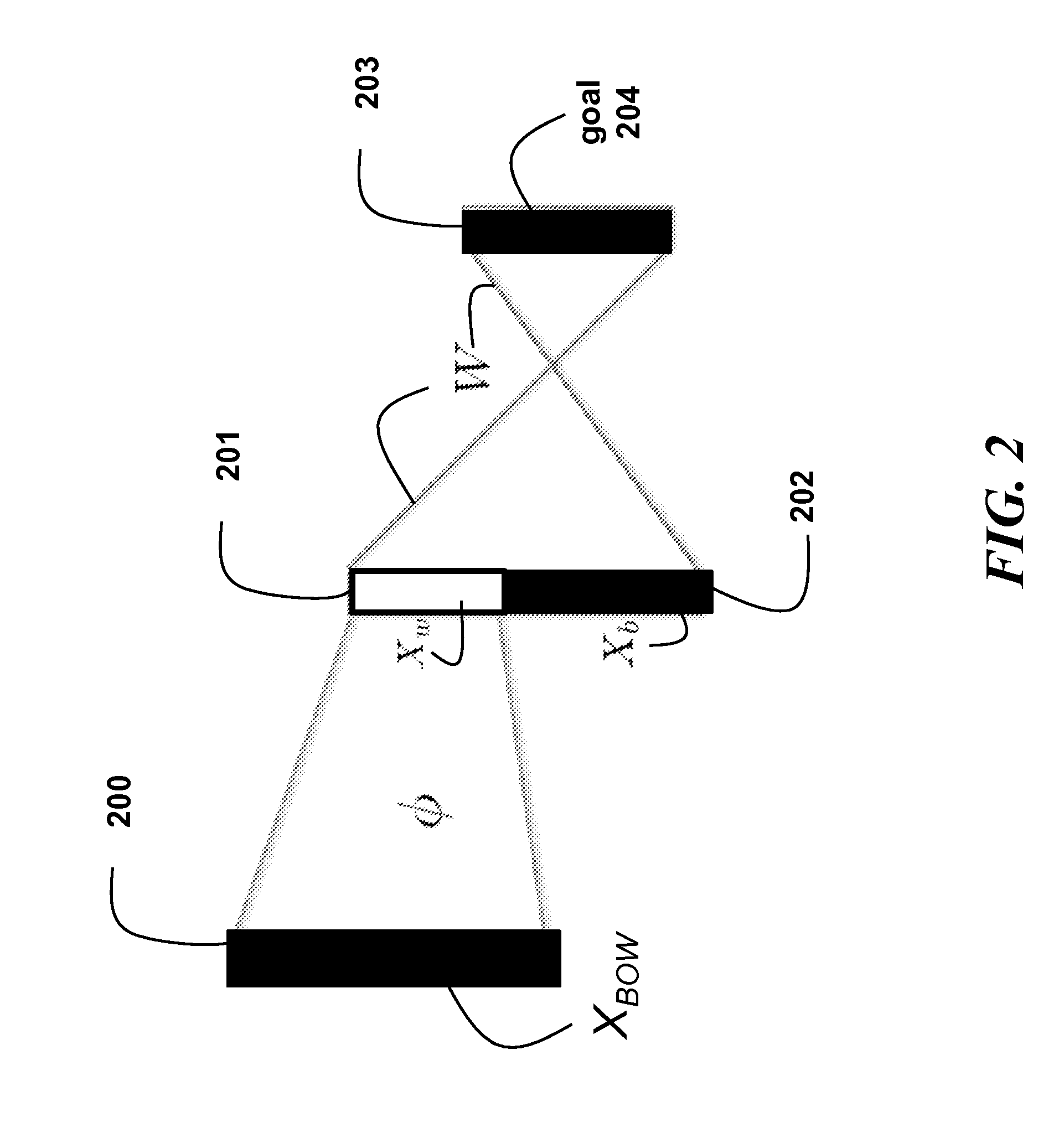Method for using a Multi-Scale Recurrent Neural Network with Pretraining for Spoken Language Understanding Tasks
- Summary
- Abstract
- Description
- Claims
- Application Information
AI Technical Summary
Benefits of technology
Problems solved by technology
Method used
Image
Examples
Embodiment Construction
[0033]The embodiments of our invention provide a method for determining a next action to be performed by a spoken dialog system based on a goal expressed in speech from a user during a dialog.
[0034]Fine-Tuning of Linear Input Networks
[0035]The method, which can be used for spoken language understanding tasks, uses a discriminative approach to represent intention and goal estimation models. In addition, we can incorporate various information via feature engineering. We use multivariate logistic regression to determine a posterior probability P(g|X) for a classification target g and feature vector X as
P(g|X)=softmax([WX]g), (1)
where [Y]g means a gth raw element of vector Y. The softmax function is
softmax(zm)=Δzm∑kexp(zk),(2)
where z is a vector in the range [0, 1], and m and k are indices.
[0036]The weight matrix W is estimated during training, described in greater detail below. For intention prediction, X is a bag-of-words (BoW) feature vector, and g is an intention category. For the ...
PUM
 Login to View More
Login to View More Abstract
Description
Claims
Application Information
 Login to View More
Login to View More - R&D
- Intellectual Property
- Life Sciences
- Materials
- Tech Scout
- Unparalleled Data Quality
- Higher Quality Content
- 60% Fewer Hallucinations
Browse by: Latest US Patents, China's latest patents, Technical Efficacy Thesaurus, Application Domain, Technology Topic, Popular Technical Reports.
© 2025 PatSnap. All rights reserved.Legal|Privacy policy|Modern Slavery Act Transparency Statement|Sitemap|About US| Contact US: help@patsnap.com



